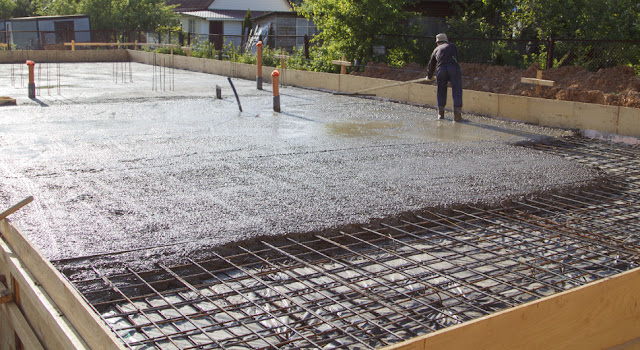Unlocking the Potential of Welded Wire Mesh Fabric in Reinforcing Concrete
Unlocking the potential of welded wire mesh fabric in reinforcing concrete holds the key to building structures that are not only strong and durable, but also highly resilient to a variety of forces. As a versatile and cost-effective solution, welded wire mesh fabric offers numerous benefits that go beyond traditional reinforcement methods. In this article, we will delve into the various applications and advantages of using welded wire mesh fabric in concrete reinforcement. From enhancing the structural integrity of buildings to increasing their resistance to cracking and shrinkage, this innovative approach is revolutionizing the construction industry. We will explore how welded wire mesh fabric can improve the overall performance and longevity of concrete structures, while also reducing construction time and costs. Whether you are a contractor, engineer, or simply interested in the latest advancements in construction technology, this article will provide valuable insights into the untapped potential of welded wire mesh fabric in reinforcing concrete.
Advantages of using welded wire mesh fabric in concrete reinforcement
GI Welded wire mesh offers several advantages over traditional reinforcement
methods such as rebar. Firstly, it provides a more uniform distribution of
reinforcement throughout the concrete, resulting in enhanced structural
integrity. The evenly spaced wires in the mesh fabric create a grid-like
pattern that helps to evenly distribute the load and prevent localized stress
concentrations. This reduces the risk of cracks and enhances the overall
strength of the concrete structure.
Secondly,
welded wire mesh fabric improves the resistance of concrete to cracking and
shrinkage. The presence of the mesh fabric reinforces the concrete, making it
less prone to cracking under tensile forces. The mesh fabric acts as a barrier,
preventing cracks from propagating and spreading throughout the concrete.
Additionally, it helps to control shrinkage by providing restraint to the
concrete during the drying process. This results in a more durable and
long-lasting concrete structure.
Furthermore,
welded wire mesh fabric offers increased flexibility in design and
construction. Unlike rebar, which is limited in its shape and size, welded wire
mesh fabric can be easily cut and shaped to fit the specific requirements of
the project. This versatility allows for more complex and intricate designs,
giving architects and engineers greater freedom in their creative vision. Additionally,
the lightweight nature of the mesh fabric makes it easier to handle and
install, reducing construction time and costs.
Types of welded wire mesh fabric and their applications
There are
several types of welded wire mesh fabric available, each with its own unique
characteristics and applications.The most common types include square mesh,
rectangular mesh, and deformed mesh.
Squaremesh is the most basic and commonly used type of welded wire mesh fabric. It
consists of wires that are welded together at right angles to form a square
grid pattern. Square mesh is suitable for a wide range of applications,
including concrete slabs, walls, and foundations. It provides excellent
reinforcement and is easy to handle and install.
Rectangular
mesh, as the name suggests, consists of wires that are welded together to form
a rectangular grid pattern. This type of mesh fabric is often used in
applications where longer spans or greater load-bearing capacity is required,
such as bridge decks and retaining walls. The rectangular shape provides
increased strength and stability, making it ideal for larger-scale projects.
Deformed
mesh is specifically designed to enhance the bond between the concrete and the
reinforcement. It features deformations or ridges along the wires, which
improve the mechanical interlock between the concrete and the mesh fabric. This
type of mesh fabric is commonly used in applications where a higher level of
reinforcement is required, such as high-rise buildings and heavy-duty
industrial structures.
Welded wire mesh fabric installation process
The
installation process of welded wire mesh fabric in concrete reinforcement is
relatively straightforward and can be completed by trained professionals. The
following steps outline the typical installation process.
1. **Preparation**:
The first step is to prepare
the site and ensure that it is clean and free from any debris or loose
materials. This includes removing any existing concrete or vegetation, as well
as leveling the ground if necessary.
2. **Placement**:
Once the site is prepared,
the mesh fabric is laid out according to the project specifications. It is
important to ensure that the fabric is properly aligned and positioned, with
sufficient overlap at the edges to ensure proper continuity of reinforcement.
3. **Fastening**:
After the mesh fabric is
properly positioned, it is securely fastened to the formwork or existing
concrete using wire ties or other suitable fastening methods. This helps to ensure
that the fabric remains in place during the pouring and curing process.
4. **Pouring and curing**:
Once
the mesh fabric is in place, the concrete is poured and levelled to the desired
thickness. It is important to ensure that the concrete is properly consolidated
to ensure proper bonding with the mesh fabric. After pouring, the concrete is
allowed to cure and gain strength before any further construction activities
are carried out.
Common misconceptions about using welded wire mesh fabric in concrete reinforcement.
Despite
the numerous advantages of using welded wire mesh fabric in concrete
reinforcement, there are still some common misconceptions that exist. One of
the most prevalent misconceptions is that mesh fabric is only suitable for non-structural
applications. While it is true that mesh fabric is often used in non-structural
elements such as sidewalks and driveways, it can also be used to reinforce
structural elements such as walls and columns. The key is to properly design
and specify the appropriate mesh fabric for the specific application.
Another
misconception is that mesh fabric is not as strong or durable as rebar. While
rebar has been traditionally used for concrete reinforcement, advancements in
welding technology and material science have made mesh fabric a viable
alternative. In fact, when properly designed and installed, mesh fabric can
provide comparable or even superior performance to rebar. It is important to
consult with a qualified engineer or contractor to determine the most
appropriate reinforcement method for a given project.
Cost-effectiveness of using welded wire mesh fabric
In
addition to its numerous technical advantages, welded wire mesh fabric also
offers significant cost savings compared to traditional reinforcement methods.
The use of mesh fabric can reduce the amount of concrete required, resulting in
lower material costs. Additionally, the lightweight nature of the fabric makes
it easier to handle and install, reducing labor costs. Furthermore, the
versatility and ease of installation of mesh fabric can help to reduce
construction time, resulting in overall cost savings. When considering the
long-term performance and durability benefits of mesh fabric, the
cost-effectiveness becomes even more apparent.
Case studies showcasing the benefits of welded wire mesh fabric in concrete reinforcement
Numerous
case studies have demonstrated the benefits of using welded wire mesh fabric in
concrete reinforcement. One such case study involved the construction of a
high-rise residential building. The use of mesh fabric in the columns and shear
walls provided enhanced structural integrity and improved resistance to
cracking. The project was completed on time and within budget, thanks to the
ease of installation and reduced construction time associated with mesh fabric.
Another
case study focused on the rehabilitation of a deteriorated bridge deck. The use
of mesh fabric in the deck overlay provided increased load-bearing capacity and
enhanced durability. The project was successfully completed with minimal
disruption to traffic, thanks to the lightweight and easy-to-handle nature of
the mesh fabric.
These
case studies highlight the practical applications and tangible benefits of
using welded wire mesh fabric in concrete reinforcement. By choosing mesh
fabric over traditional reinforcement methods, contractors and engineers can
achieve superior results in terms of structural performance, durability, and
cost-effectiveness.
Maintenance and durability of concrete reinforced with welded wire mesh
fabric
Concrete
reinforced with welded wire mesh fabric exhibits excellent long-term durability
and requires minimal maintenance. The mesh fabric helps to prevent cracking and
shrinkage, reducing the likelihood of costly repairs. Additionally, the uniform
distribution of reinforcement provided by the mesh fabric enhances the overall
strength and resistance of the concrete, ensuring its longevity.
To
maintain the durability and performance of concrete reinforced with mesh
fabric, it is important to follow proper maintenance practices. This includes
regular inspections to identify any signs of deterioration or damage, as well
as timely repairs to address any issues. Additionally, proper protection and
maintenance of the concrete surface can help to prevent corrosion and extend
the service life of the structure.
Best practices for using welded wire mesh fabric in concrete reinforcement
To ensure
the successful use of welded wire mesh fabric in concrete reinforcement, it is
important to follow best practices throughout the design and construction
process. Some key best practices include:
1. **Proper design**:
Engage a qualified engineer or consultant to properly design and specify the
appropriate mesh fabric for the specific application. Consider factors such as
load requirements, environmental conditions, and desired service life.
2. **Quality control**:
Implement a robust quality control program to ensure that the mesh fabric meets
the required standards and specifications. This includes regular testing and
inspection of the fabric for dimensional accuracy, weld strength, and coating
integrity.
3. **Proper installation**:
Ensure that the mesh fabric is properly installed according to the
manufacturer's recommendations and industry best practices. This includes
proper positioning, fastening, and consolidation of the concrete.
4. **Regular maintenance**:
Implement a proactive maintenance program to monitor the condition of the
reinforced concrete and address any issues in a timely manner. This includes
regular inspections, repairs, and protection measures.
By
following these best practices, contractors and engineers can maximize the
benefits of using welded wire mesh fabric in concrete reinforcement and ensure
the long-term performance and durability of the structures.
Conclusion
Unlocking
the potential of welded wire mesh fabric in reinforcing concrete is
revolutionizing the construction industry. Its numerous advantages, including
enhanced structural integrity, increased resistance to cracking and shrinkage,
cost-effectiveness, and ease of installation, make it an attractive alternative
to traditional reinforcement methods. By properly designing, specifying, and
installing mesh fabric, contractors and engineers can achieve superior results
in terms of strength, durability, and cost savings. As the construction
industry continues to evolve, it is crucial to stay informed about the latest
advancements in construction technology. Whether you are a contractor,
engineer, or simply interested in the future of construction, the untapped potential
of welded wire mesh fabric in reinforcing concrete is worth exploring. By
unlocking its potential, we can build a stronger, more resilient, and
sustainable future for our built environment.



Comments
Post a Comment